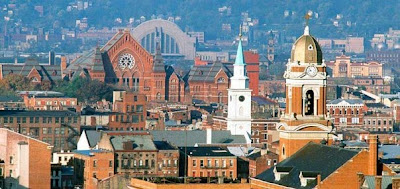 Currently running in the historic Over-the-Rhine neighborhood’s Ensemble Theater of Cincinnati (ETC), Becky’s New Car by Steven Dietz will hold its final performance on Sunday, March 28 at 2:00pm.
Currently running in the historic Over-the-Rhine neighborhood’s Ensemble Theater of Cincinnati (ETC), Becky’s New Car by Steven Dietz will hold its final performance on Sunday, March 28 at 2:00pm.
In this hilarious comedy of errors, Kate Wilford’s character Becky Foster allows herself to try on a new life for a while – complete with a new lover and a new home. But when her lie begins to unravel, she discovers that her two separate lives were significantly more intertwined that she had thought. She engages the audience for assistance, but their help cannot possible avert the mess Becky has created.
The show will run Tuesday through Thursday at 7:30pm, Friday and Saturday at 8pm, and close on Sunday with a 2pm performance. The ETC sells discounted $15 tickets 15 minutes prior to each show, so make a night of it in the Gateway Quarter and see what you’ve been missing. Grab dinner or drinks at Lavomatic or at the brand new Senate, visit the shops, then head over to the theater. Plenty of cheap and secure parking is available in one of the 3 garages within a block, but why worry about parking when you can take the bus? Visit Metro to calculate your route.
Ticks are selling fast, and range from $30-40. Numerous discounts apply for children, seniors, students, holders of the Public Radio Perks Card or the FAF Card, and Enjoy the Arts members. Patrons may purchase tickets online, in person at the ETC box office (1127 Vine Street), or by phone at (513) 421-3555.


